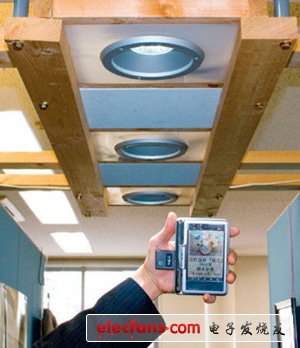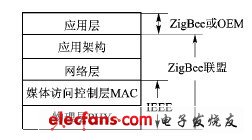introduction
With the rapid increase of data services and multimedia services, people's demand for positioning and navigation is increasing, especially in complex indoor environments, such as airport halls, exhibition halls, warehouses, supermarkets, libraries, underground parking lots, etc. Need to determine the location of the mobile terminal or its holder, facilities and items indoors. However, due to the limitations of positioning time, positioning accuracy, and indoor complex environment, the relatively complete positioning technology is not yet well utilized. ZigBee is an emerging short-range, low-rate wireless network technology. Its most notable features are low power consumption and low cost. Using ZigBee technology to achieve positioning has the advantages of low cost and low power consumption, and signal transmission is not affected by line of sight.

1 Overview of related core technologies
1.1 ZigBee technology overview
ZigBee technology [1] is an emerging two-way wireless communication technology with close range, low power consumption, low cost, low data rate, and low complexity. It is a wireless protocol developed based on the IEEE 802.15.4 standard. The protocol above the network layer is formulated by the ZigBee Alliance, and IEEE 802.15.4 is responsible for the physical layer and link layer standards. The complete ZigBee protocol suite consists of the application layer, application architecture layer, network layer, data link layer and physical layer. The protocol stack structure is shown in Figure 1.

Figure 1 ZigBee protocol stack structure
There are three frequency bands that ZigBee can use, namely the 2.4 GHz ISM band, the 868 MHz band in Europe, and the 915 MHz band in the United States. The channels that can be used in different bands are 16, 1, and 10. China uses the 2.4 GHz frequency band, which is an application-free and fee-free frequency band; uses direct sequence spread spectrum technology DSSS (Direct Sequence Spread Spectrum), with a transmission distance between 10 and 75 m (increasing RF transmit power, up to 500 m) ; The transmission rate is 20 ~ 250 kb / s, suitable for sensor data collection and control data transmission. ZigBee technology has strong networking capabilities, and can form star, tree and MESH mesh networks.
1.2 RSSI positioning technology
RSSI [2] (Received Signal Strength Indicator) refers to the strength of the wireless signal received by the node. In positioning based on the received signal strength indication RSSI, the transmitting signal strength of the transmitting node is known, and the receiving node calculates the propagation loss of the signal according to the received signal strength, using theoretical and empirical models to convert the transmission loss into distance, and reuse Some algorithms calculate the position of a node. The technical hardware requirements are low, the algorithm is relatively simple, and it shows good characteristics in the laboratory environment; but due to changes in environmental factors, it often needs to be improved in practical applications. The received signal strength is a function of the transmit power and the distance between the transmitter and receiver.
The theoretical value of received signal strength RSSI can be expressed by formula (1):
RSSI =-(10n · lgd + A) (1)
Among them, n represents the signal propagation constant, also called the propagation index; d represents the distance from the transmitter; A represents the received signal strength at a distance of 1 m.
The attenuation of the signal is a logarithmic attenuation relationship with the distance. The closer the distance between the node and the signal source, the smaller the absolute distance error caused by the deviation of the RSSI value; and when the distance is greater than a certain value, the absolute distance error caused by RSSI fluctuations will be large. An unknown node may receive signals from n reference nodes, so the first few reference nodes with large RSSI values ​​should be used for positioning calculation, so as to avoid the expansion of positioning errors.
TECHNOLOGY
WHAT IS AN Air Purifier?
Breathing clean air is very important.
It is scientifically proven that the air in our homes contains allergens(pollen ,mites ,moulds ,etc ).
noxious substance, bacteria viruses and suspended smells.
We have the solution for it!
• Small and medium sized spaces, Desktop Air Purifier, Air Cleaner
• Removes 99% of fine dust , mold , allergens and viruses
• Fan speed: Low , Normal , High
• HEPA filter air purifier can reduce pollen , dust , dander , smoke , pollution , viruses , bacteria and mold spores
•
• Filter replacement indicator
• UV lamp
• Optional HEPA H13
• HEPA filter air purifier can reduce pollen , dust , dander , smoke , pollution , viruses , bacteria and mold spores
• UVc lamp kill viruses like COVID-19
• Best air purifier for kid`s room
We care for your air
Air Purifier Big Home,Hepa Air Purifier For Home,Air Purifier Carbon Filter,Much Function Air Purifier
Ningbo Zhe Kai Electric Appliance Co.,Ltd , https://www.cnairpurifiers.com